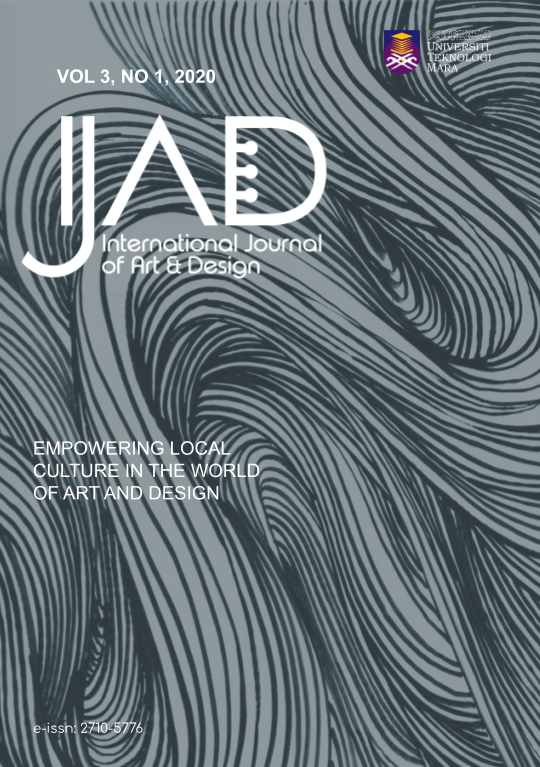Contemporary Sculpture Development:Art Learning Process, Lanna Artand Local Cultural Identity through the Integration of Installation Art, Digital Art, and Solar Cell Technology for Community’s Landmark
DOI:
https://doi.org/10.24191/ijad.v3i1.2605Keywords:
Lanna Art and Culture, Community’s Landmark, Mixed Media Sculpture, Art Learning ProcessAbstract
This research article was founded on the investigation within informative accounts of creative outcomes of a research project, based on a mix method approach of the qualitative research and community-based action research. The methodology consisted of review literature and field research alongside with artistic productive processes. The procedures include firstly, a documentary research where field research include in-depth interviews and focus-group meetings and secondly, accounts of mixed media sculpture development. The objectives of this research, combined three crucial parts which were to study and collect the local Chiang Rai art database, to design and develop contemporary sculpture documentations in order to create local landmark underneath local art and culture basis alongside the concept of creative economy, and lastly, to encourage local people to realize and appreciate the value of their own cultural heritage and the local wisdom related to Lanna art and culture through the dissemination of gaining knowledge related to the contemporary sculpture development and its presentation. The research findings highlighted that not only there were tangible outputs which were composed by the sculpture and the community’s landmark themselves, but significantly yielded a byproduct that further developed an innovative local sustainable tourism management system. This enhances the local people quality of life through experiences and knowledge gaining from the research project. These findings, therefore, could be divided into 3 main aspects. Firstly, the art learning process; the mixture of production between the knowledge development process and the art appreciation or aesthetic process. Secondly, the social learning process included the brain-storming, team-working leading to the community’s mutual agreement in order to find the solution or products. Lastly, the community-based action research encourages an integration operation between the local community and the university in order to use the domestic resources for local sufficient and sustainable benefits.
Downloads
Published
Issue
Section
License
Copyright (c) 2020 International Journal of Art and Design

This work is licensed under a Creative Commons Attribution-NonCommercial-NoDerivatives 4.0 International License.



